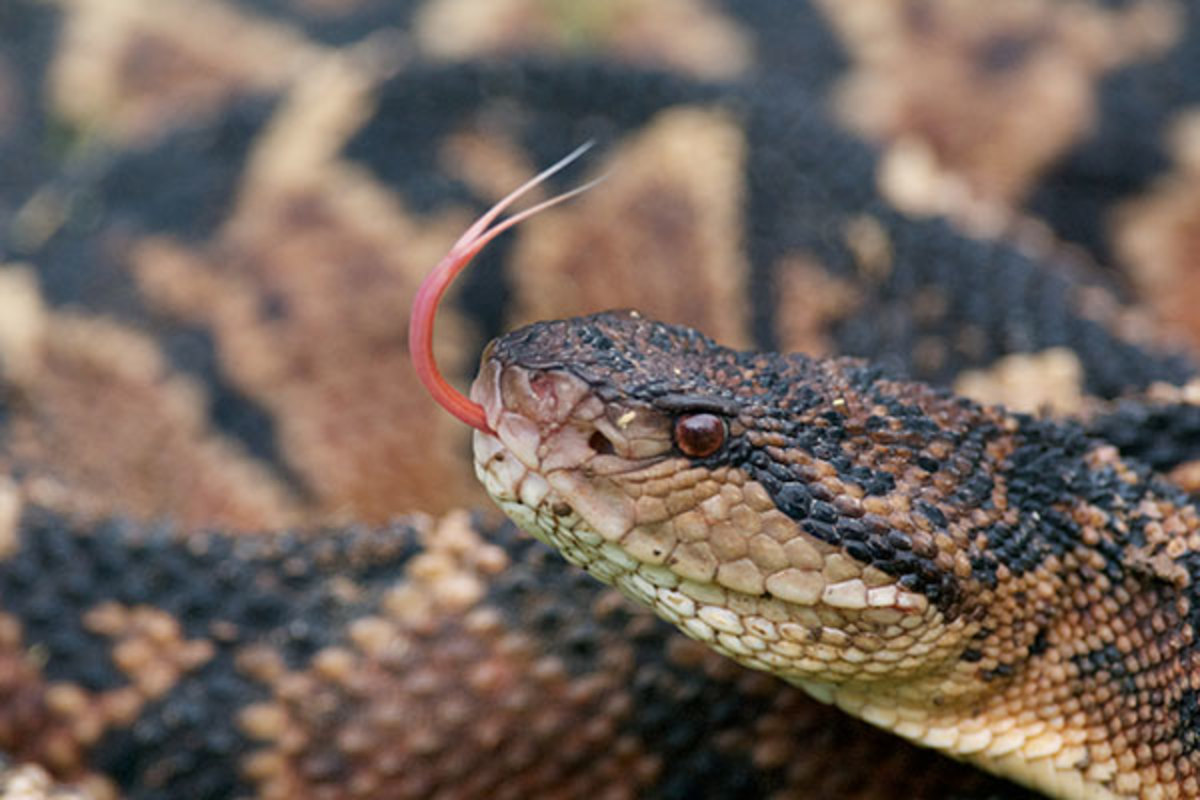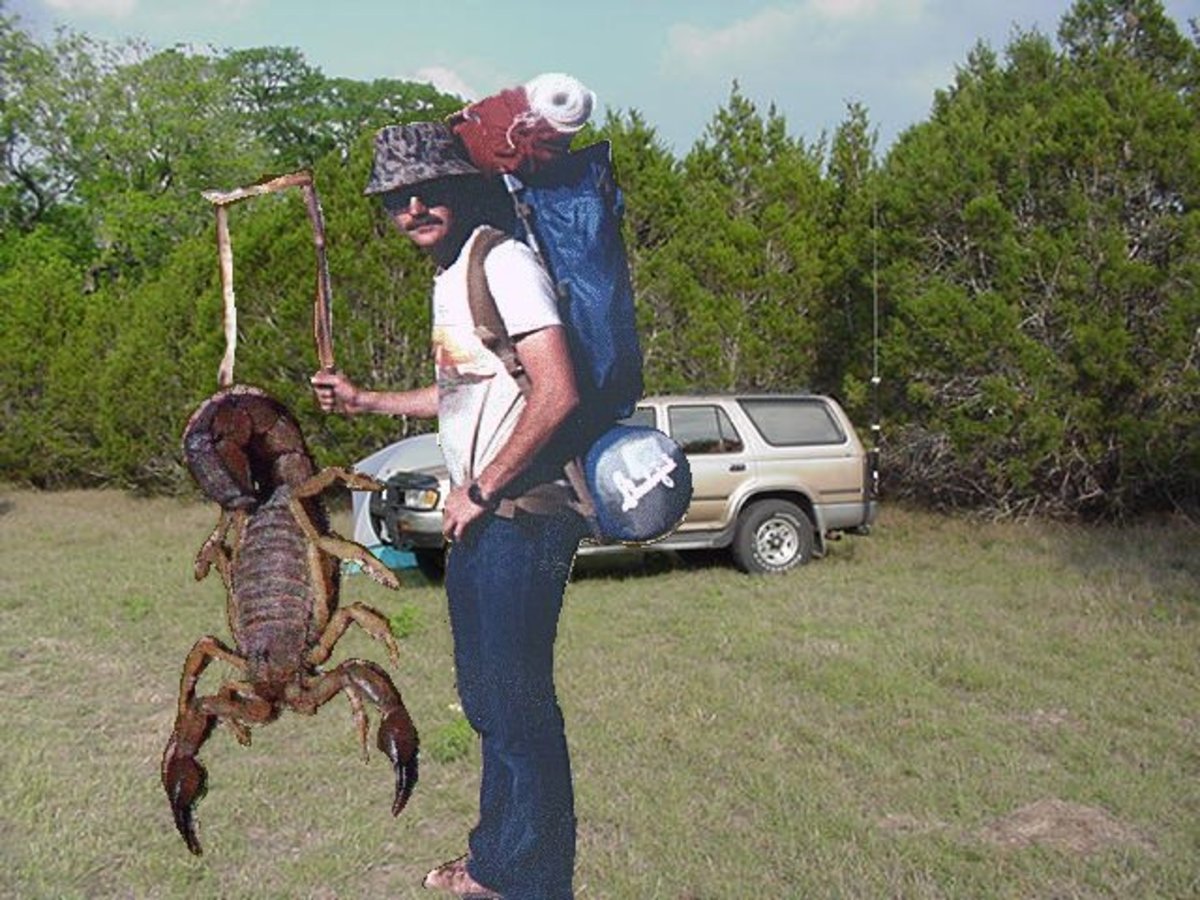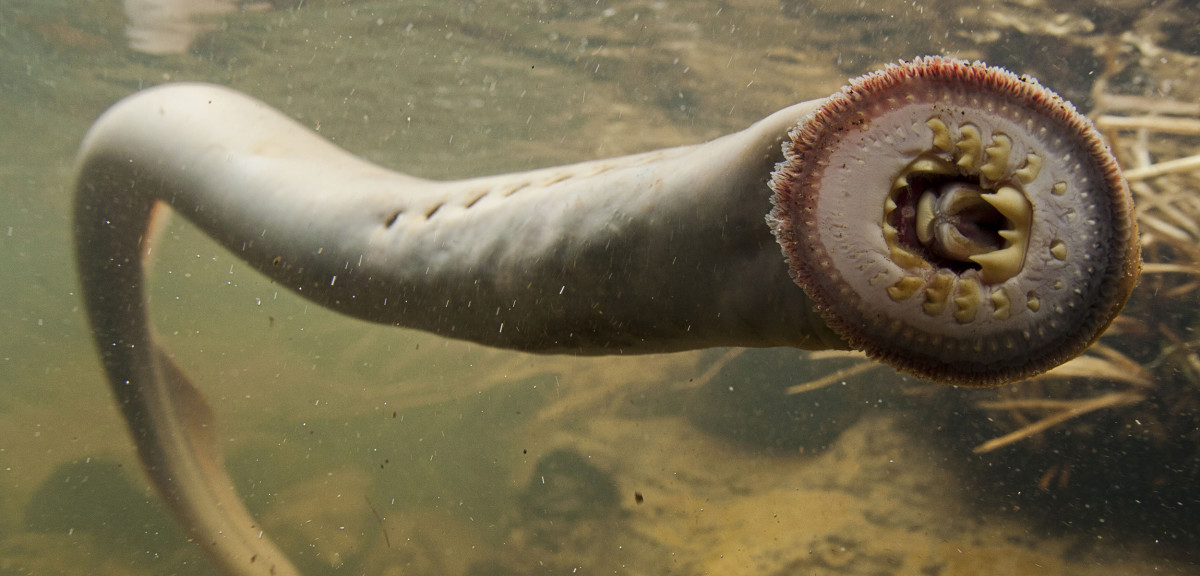Arthropods: Insects, Spiders, Scorpions, Shrimp, Crabs, and More
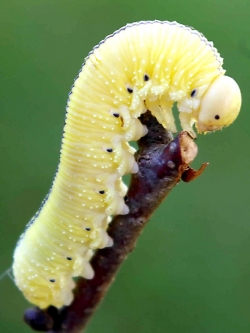
The Characteristics of Arthropods
Arthropods are invertebrate animals that have jointed appendages that can bend, exoskeletons to protect their bodies, and segmented bodies.
Insects, spiders, scorpions, mites, centipedes, millipedes, crayfish, lobster, shrimp, crabs, barnacles, and many other type of animals are all arthropods.
The cute little caterpillar to the right is an arthropod. He has an exoskeleton that he'll quickly grow out of, jointed legs on his thorax, and a segmented body.
On this page, I'll tell you about the various characteristics of arthropods and show you some arthropods too. Don't miss the video about compound eyes! You may be surprised at how an animal with compound eyes sees!
Types of Arthropods
Arachnids
(including spiders, scorpions, and mites),
Insects,
Millipedes,
Centipedes,
Crustaceans
(including crayfish, crabs, lobsters, shrimp, and even barnacles)
A Variety of Types of Arthropods
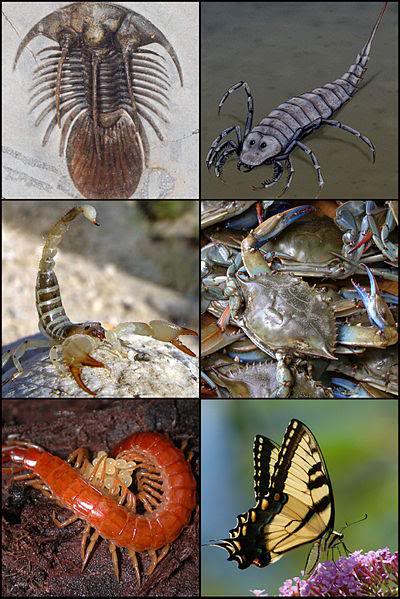
Arthropods shown above:
Top left:. Fossil of a trilobite (from 400 million years ago)
Top right: Sea Scorpion
Middle left: Scorpion
Middle right: Blue crab
Bottom left: Centipede with eggs
Bottom right: Swallowtail butterfly
Arthropods include:
- Arachnids (including spiders, scorpions, and mites)
- Insects (including beetles, termites, Luna Moths, Walking Stick insects, etc.)
- Millipedes and Centipedes
- Crustaceans (including crayfish, crabs, lobsters, shrimp, and even barnacles)
What makes an arthropod an arthropod? - Arthropoda = "Joint Foot"
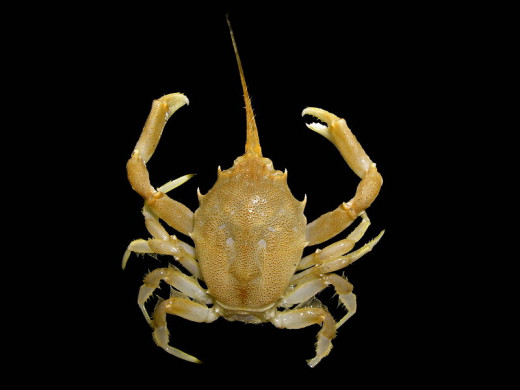
- One of the main characteristics of arthropods are their jointed appendages. The legs, antennae and mouthpieces are all appendages that have joints and thus can bend.
What Is an Arthropod?
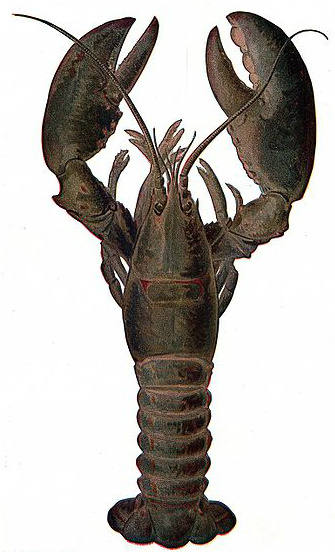
Segmentation
- Arthropods have segmented bodies.
- Another key feature of arthropods is segmentation.
Segmentation means body sections that repeat over and over, such as in the lobster shown here. Segmentation only occurs during the larval stage (and not the adult stage) in some arthropods. For example caterpillars have segmented bodies, but butterflies don't.
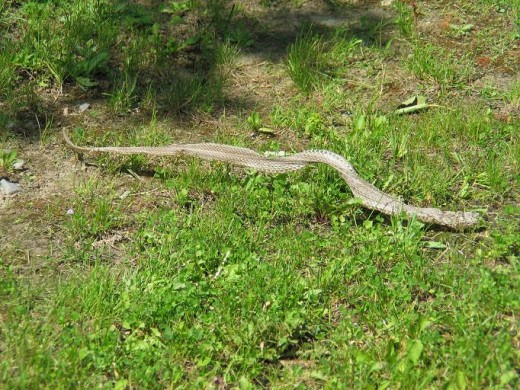
Exoskeleteon and molting
- Arthropods have an exoskeleton. This is a "skeleton" made mostly of chitin on the outside of their bodies. It both protects the arthropods' body and also helps prevent the arthropod from drying out. In order to allow the arthropod to be able to move, the exoskeleton is thin at the joints of appendages.
- When they outgrow their exoskeleton, arthropods molt. Molting means climbing out of one's old exoskeleton after having grown a new one underneath. Although the new exoskeleton is soft at first, it soon becomes hard.
Shown here is a picture of a snake skin. When the snake grew too large for his current skin, he shed it. Although snakes molt, they are NOT arthropods. Snakes are reptiles.
Watch this Cicada molting. This is a very short movie of a cicada coming out of his skin. Unlike the snake above, a cicada is an arthropod!
Compound Eyes
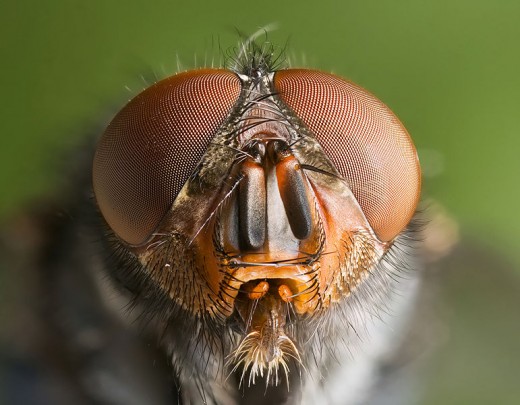
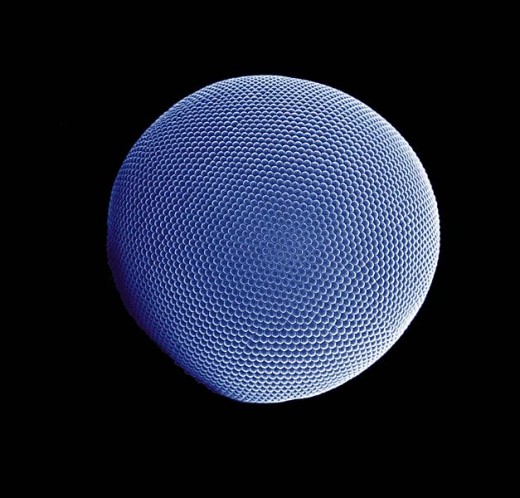
Many arthropods have compound eyes made up of many smaller "eyes."
- Many arthopods have compound eyes. Compound eyes are made up of many individual units. The brain receive information from all of the individual units and puts them together into a whole scene. Arthropods with compound eyes can't focus on things that are far away as well as we can, but they can detect motion much easier than we can. This makes sense for an arthopod, as being able to see things that are moving nearby is much more important to the safety of an arthopod than being able to see great distances!
Shown here is the compound eye of an Antarctic krill.
Fascinating video on Seeing With A Compound Eye!
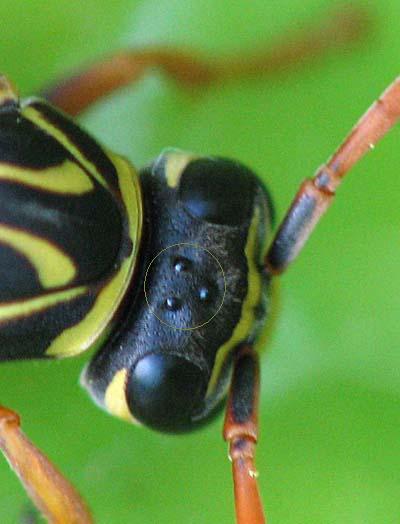
Simple Eyes
- Many insects have simple eyes, in addition to compound eyes. Simple eyes can detect light. In some insects, simple eyes can allow the insect to see the horizon. Being able to see the horizon gives the insect guidance in flight.
Shown here are the simple and Compound Eyes on a Wasp (The simple eyes are circled.)
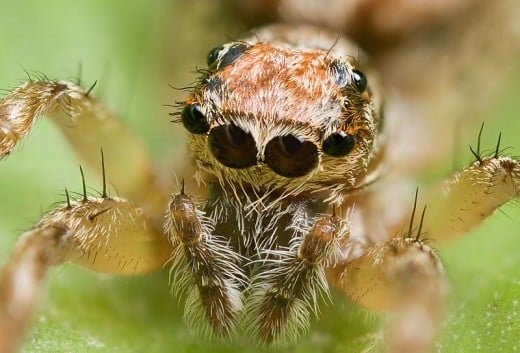
- Spiders have simple eyes, but no compound eyes. Each pair of simple eyes in a spider is adapted to a specific task.
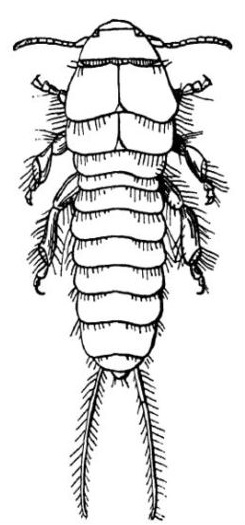
Most arthropods have a head, thorax, and abdomen.
Head ------>
Thorax -------->
Abdomen --------->
- Most arthropods have 3 main parts to their bodies: a head, a thorax, and an abdomen.
- There are some arthropods which only have two main body parts: the cephalothorax (head and thorax fused together) and an abdomen.
Crabs are an example of an arthropod with a cephalothorax rather than a distinct head and thorax.
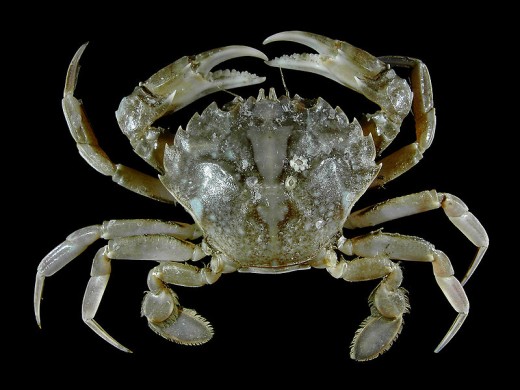

More characteristics of Arthropods - Open circulatory system, coelom, wings, excretory system
- Arthropods have an open circulatory system. That means that the fluid flows out of the circulatory vessels and onto the body tissues before being collected back into the circulatory vessels again.
- Arthropods have a coelom. A coelom is a fluid filled body cavity that contains the internal organs.
- Many, but not all, arthropods have wings.
- Arthropods that live on land use malphighian tubules in their excretory systems. The excretory system not only removes wastes from their bodies, it also helps them conserve water.
How it works: The malphighian tubules have blood flowing over them. Water and small particles in the water (from the blood) enter the tubules and then move to the animal's gut. As the fluid and particles moves through the gut, the water and other valuable components of the fluid are reabsorbed into the body tissues, while the waste remains in the gut and later leaves the body through the rectum.
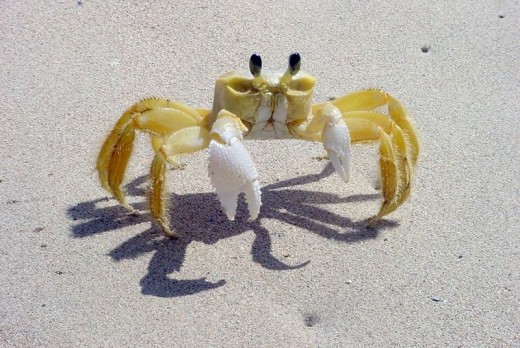
Crabs Are Arthropods
Crabs are arthropods because they have:
- an exoskeleton
- paired, jointed appendages
- a segmented body
- an open circulatory system
- and bilateral symmetry (The right side of his body looks the same as the left - well, except for the one claw!)
© 2012 JanieceTobey




